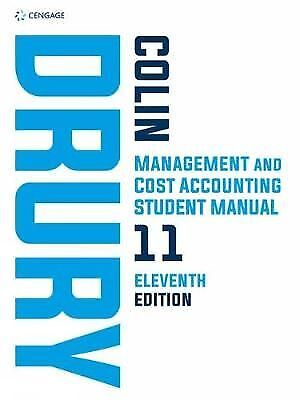Question
16-29 Comparison of alternative joint-cost-allocation methods, further-processing decision, chocolate products. The Cocoa Factory manufactures and distributes chocolate products. It purchases cocoa beans and processes them
16-29
Comparison of alternative joint-cost-allocation methods, further-processing decision, chocolate products.The Cocoa Factory manufactures and distributes chocolate products. It purchases cocoa beans and processes them into two intermediate products: chocolate-powder liquor base and milk-chocolate liquor base. These two intermediate products become separately identifiable at a single splitoff point. Every 900 pounds of cocoa beans yields 30 gallons of chocolate-powder liquor base and 120 gallons of milk-chocolate liquor base.
The chocolate-powder liquor base is further processed into chocolate powder. Every 30 gallons of chocolate-powder liquor base yield 670 pounds of chocolate powder. The milk-chocolate liquor base is further processed into milk chocolate. Every 120 gallons of milk-chocolate liquor base yield 1,090 pounds of milk chocolate.
Production and sales data for August 2014 are as follows (assume no beginning inventory):
Cocoa beans processed, 19,800 pounds
Costs of processing cocoa beans to splitoff point (including purchase of beans), $68,000
| Production | Sales | Selling Price | Separable Processing Costs | |
| Chocolate powder | 14,740 pounds | 6,700 pounds | $ 12 per pound | $8,975 |
| Milk chocolate | 23,980 pounds | 14,500 pounds | $10 per pound | $91,095 |
Cocoa Factory fully processes both of its intermediate products into chocolate powder or milk chocolate. There is an active market for these intermediate products. In August 2014, Cocoa Factory could have sold the chocolate-powder liquor base for $24 a gallon and the milk-chocolate liquor base for $9 a gallon.
Required
1. Calculate how the joint costs of $68,000 would be allocated between chocolate powder and milk chocolate under the following methods:
a. Sales value at splitoff
b. Physical-measure (gallons)
c. NRV
d. Constant gross-margin percentage NRV
2. What are the gross-margin percentages of chocolate powder and milk chocolate under each of the methods in requirement 1?
3. Could Cocoa Factory have increased its operating income by a change in its decision to fully process both of its intermediate products? Show your computations.
Step by Step Solution
There are 3 Steps involved in it
Step: 1

Get Instant Access to Expert-Tailored Solutions
See step-by-step solutions with expert insights and AI powered tools for academic success
Step: 2

Step: 3

Ace Your Homework with AI
Get the answers you need in no time with our AI-driven, step-by-step assistance
Get Started


